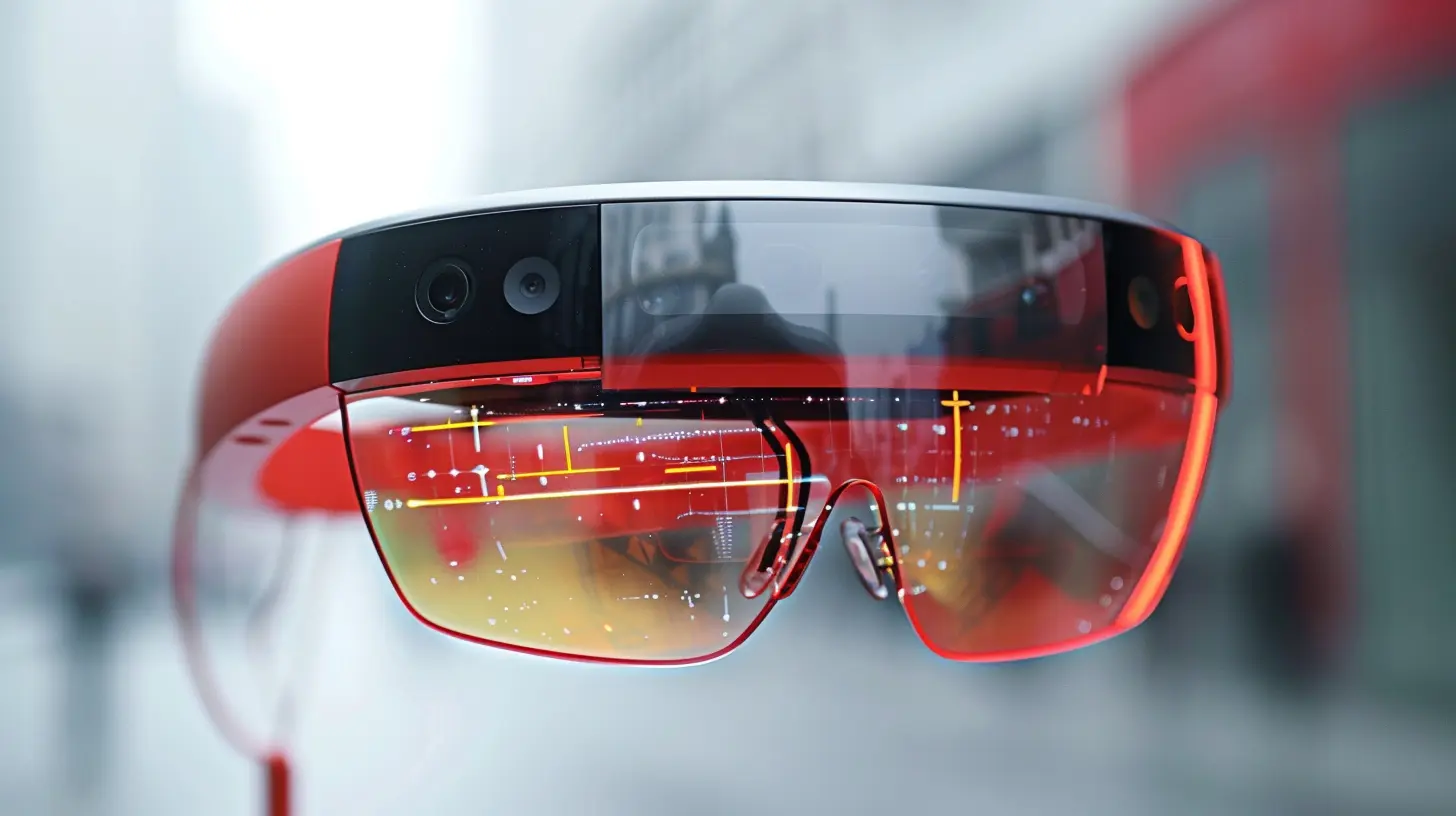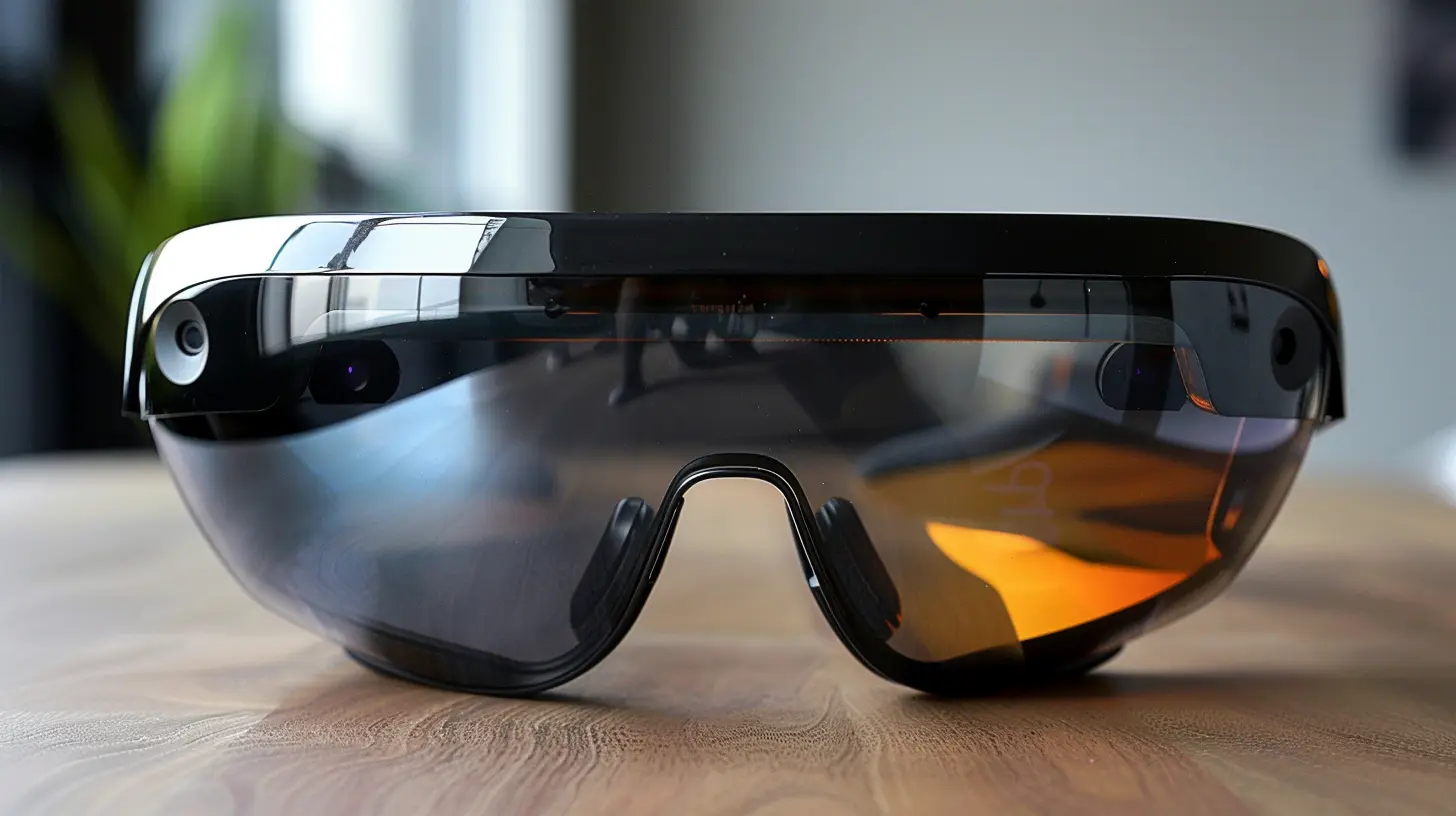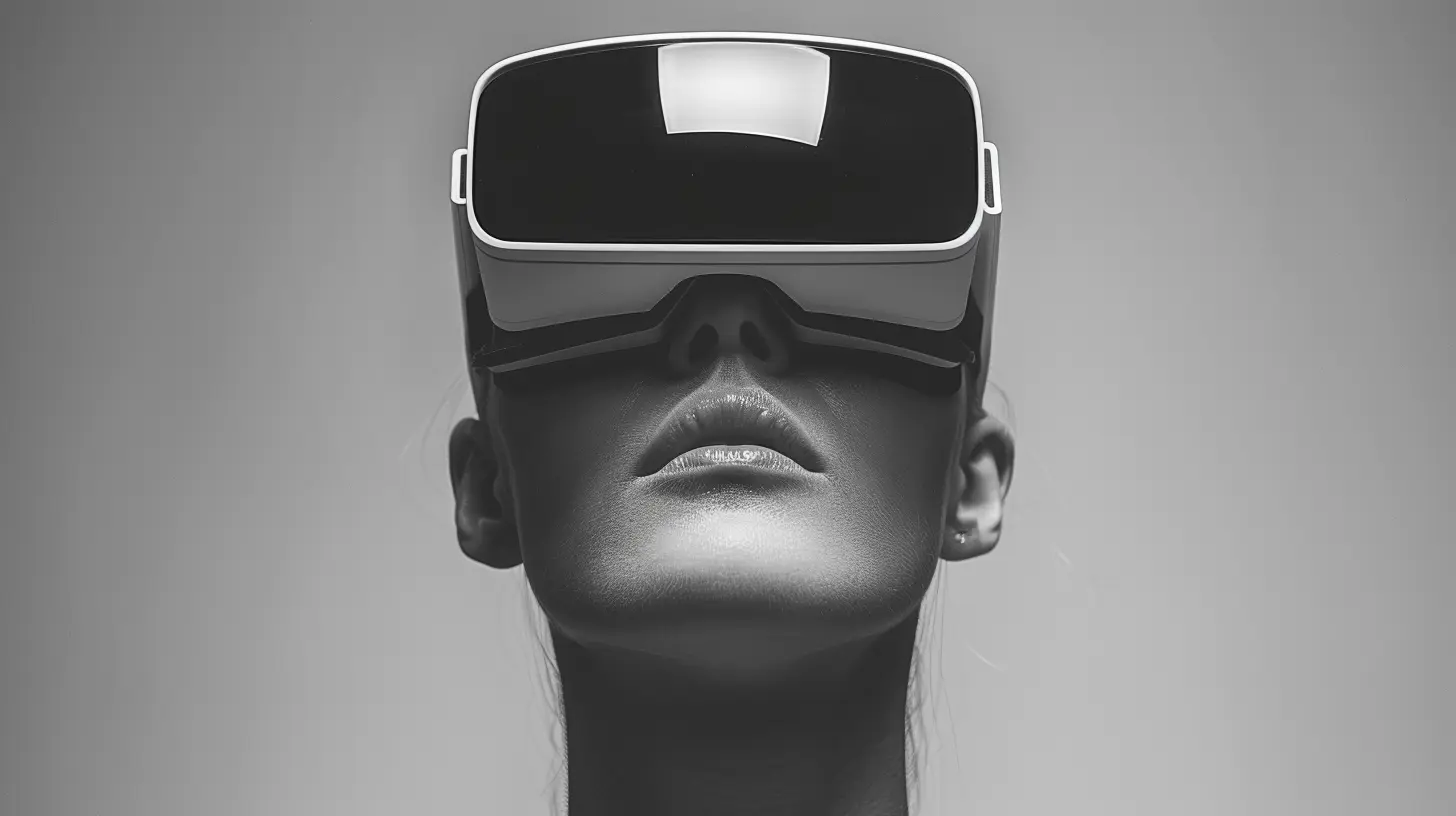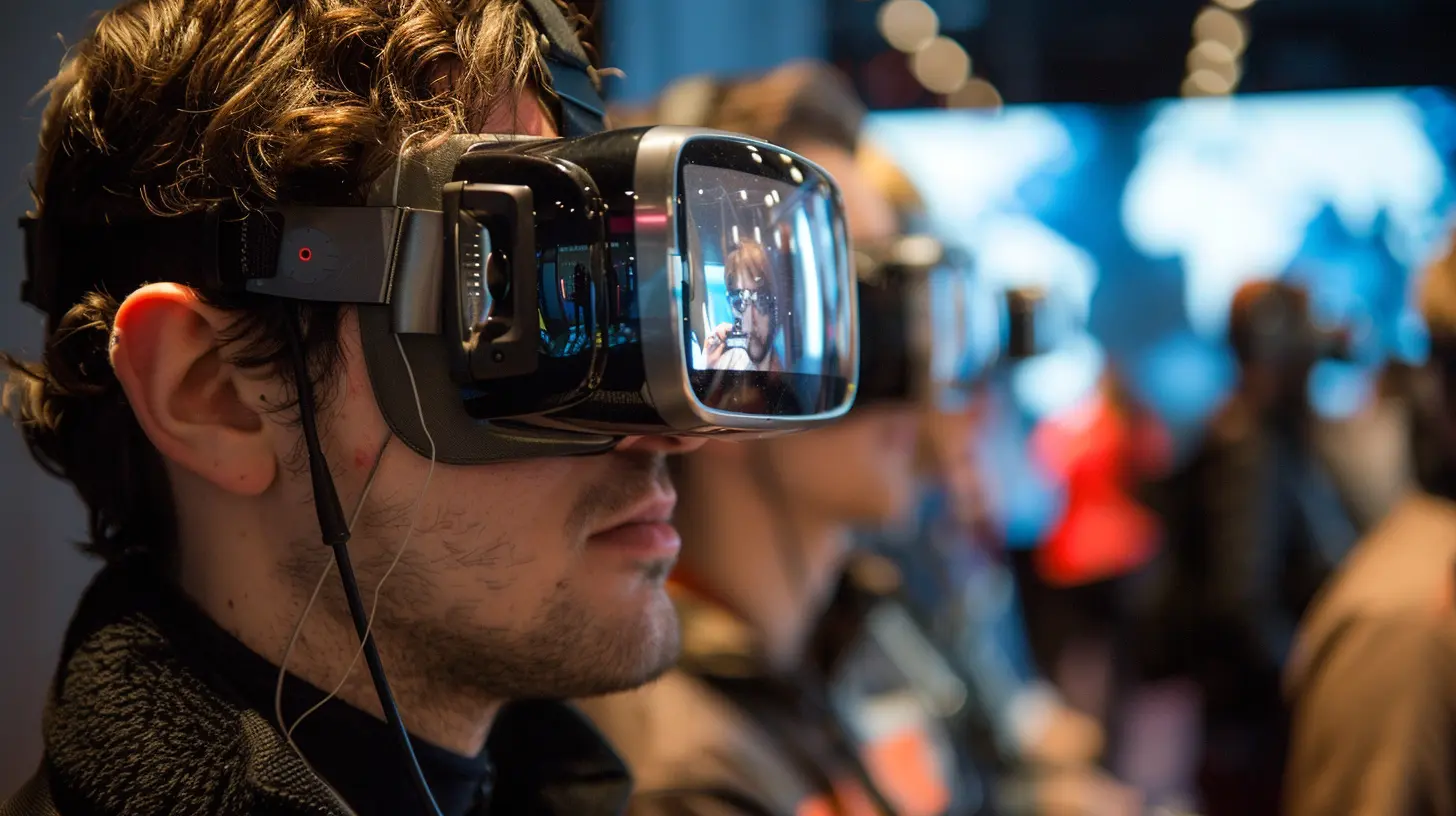Augmented Reality and Wearables: The New Frontier of Immersive Experiences
24 June 2025
Technology has a way of sneaking into our lives and completely transforming how we interact with the world. From smartphones to smartwatches, we've seen innovation evolve at lightning speed. But now, there’s a new player in town—Augmented Reality (AR) combined with wearable technology. Together, they are shaping the future of immersive experiences in ways we never imagined.
So, what does this mean for you? Whether you're a gaming enthusiast, a healthcare professional, or just someone curious about the latest tech trends, AR wearables are redefining how we see and engage with our surroundings. Let’s dive into this fascinating world and uncover why this duo is revolutionizing our future. 
What is Augmented Reality (AR)?
Augmented Reality (AR) bridges the gap between the digital and physical worlds. Unlike Virtual Reality (VR), which immerses users in a fully digital environment, AR enhances reality by overlaying digital content on top of what we already see.Think about Pokémon GO—it’s the perfect example of AR in action. The game places virtual creatures into the real world through your smartphone. But AR isn't just about games. It has practical applications in medicine, education, retail, and beyond. 
The Rise of Wearable Technology
Now, let’s talk about wearables. These are smart devices we wear—like smart glasses, AR headsets, and even AR contact lenses. We’re used to seeing wearables in the form of fitness trackers and smartwatches, but AR wearables take things to a whole new level.Popular AR Wearable Devices
- Microsoft HoloLens – Used in industries like healthcare and engineering, this mixed-reality headset allows professionals to interact with 3D holograms.- Magic Leap – A sleek AR headset designed to blend digital content with the real world seamlessly.
- Google Glass Enterprise Edition – Initially aimed at consumers, this device now finds its place in business environments, from logistics to assembly lines.
- Apple Vision Pro – Apple’s recent entry into AR wearables brings immersive experiences to entertainment, work, and communication.

How AR and Wearables Are Changing the Game
Technology is at its best when it enhances our daily lives without making things more complicated. The marriage of AR and wearables is doing just that—reshaping various sectors in ways we never thought possible.1. Gaming and Entertainment
Gaming has always been a driving force behind tech advancements, and AR wearables are no exception. AR gaming turns the real world into your playground. Imagine battling aliens in your living room or solving puzzles that appear right before your eyes through an AR headset.Companies like Niantic are leading the charge by integrating AR into mobile gaming. But future advancements hint at an era where we won't even need phones—just lightweight AR glasses that deliver hyper-immersive experiences.
2. Healthcare and Surgery
Wearable AR devices are making waves in healthcare. Imagine doctors using AR glasses to visualize veins or organs while performing surgeries. This isn’t science fiction—it’s happening right now!Surgeons can use AR overlays to access real-time data, reducing the need to glance at screens during operations. Companies like Medivis and AccuVein are already leveraging AR wearables to optimize precision and patient outcomes.
And it’s not just for surgeons. AR-assisted physical therapy helps patients recover faster by guiding them through exercises with real-time visual cues.
3. Retail and Shopping Experiences
Ever wished you could try on clothes without stepping into a fitting room? AR wearables make this a reality. Retailers are integrating AR mirrors and smart glasses that allow shoppers to "wear" outfits virtually.Even online shopping is evolving. Brands like IKEA and Amazon already let users visualize furniture in their homes through AR apps. Imagine combining that with smart glasses—no more guessing whether that couch fits in your living room!
4. Education and Training
Learning is no longer confined to textbooks and screens. AR wearables are turning education into an immersive experience. Think medical students practicing surgeries in a virtual setting or history students walking through an interactive version of Ancient Rome.Corporate training programs are also adopting AR wearables, allowing employees to receive hands-free, real-time instructions. Boeing, for instance, uses AR-guided training for assembling aircraft components, reducing errors and improving efficiency.
5. Work and Productivity
Remote work is here to stay, but AR wearables are taking it to the next level. Imagine attending a virtual meeting where your colleagues appear as holograms right in your living room. No more staring at static Zoom screens—AR will bring 3D collaboration into our everyday workflow.Businesses are also using AR smart glasses for hands-free access to data. Think technicians repairing machines with digital instructions overlaid directly on their field of view—no need to flip through manuals. 
The Challenges of AR Wearables
As exciting as AR wearables sound, they still face hurdles that need to be addressed before mass adoption.1. Cost and Accessibility
High-end AR wearables like Microsoft HoloLens and Magic Leap come with hefty price tags, making them inaccessible to everyday consumers. Until costs come down, widespread adoption remains a challenge.2. Battery Life Issues
Advanced AR experiences demand a lot of power, draining batteries quickly. Manufacturers are working on this, but until we see better battery technology, users may find themselves constantly recharging their devices.3. Privacy Concerns
Wearing AR glasses that can record surroundings raises ethical and privacy concerns. Will people feel comfortable being unknowingly recorded? Regulations need to catch up to this growing technology.4. User Comfort and Design
Bulky, heavy AR headsets can be uncomfortable for long-term use. Companies are working on smaller, more stylish designs, but there’s still a long way to go before they blend seamlessly into everyday fashion.The Future of AR Wearables
Despite the challenges, the future of AR wearables is incredibly bright. Tech giants like Apple, Google, and Meta are heavily investing in augmented reality, and innovation is accelerating rapidly.Here’s what we can expect in the near future:
- Lighter and more fashionable AR glasses that resemble regular eyewear.
- Enhanced AI integration for smarter, more intuitive AR experiences.
- Better connectivity with 5G and cloud computing, allowing for real-time processing without bulky hardware.
- Wider adoption across industries, from education and healthcare to travel and entertainment.
One thing’s for sure—AR wearables are not just a passing trend. They have the potential to completely reshape how we interact with the world around us.
Final Thoughts
AR and wearable technology are a match made in tech heaven. Whether you’re playing an AR game, getting real-time medical guidance, or attending a holographic work meeting, one thing is clear—immersive experiences are no longer limited to sci-fi movies.As technology continues to evolve, AR wearables will become as common as smartphones. The question is: Are you ready to embrace this new frontier of innovation? Because the future isn't just coming—it's already here.
all images in this post were generated using AI tools
Category:
Wearable DevicesAuthor:

Michael Robinson
Discussion
rate this article
2 comments
Solaria Morrow
Augmented reality and wearables are revolutionizing immersive experiences by blending digital content with the physical world. This convergence enhances user engagement, offering innovative applications in gaming, education, and professional training.
September 24, 2025 at 4:37 AM

Michael Robinson
Thank you for your insightful comment! I completely agree that augmented reality and wearables are transforming experiences across various fields, making engagement more interactive and impactful.
Zina McPhail
This article beautifully highlights the transformative potential of augmented reality and wearables. Embracing these technologies can revolutionize how we interact with the world, making everyday experiences truly immersive and exciting!
July 10, 2025 at 2:54 AM

Michael Robinson
Thank you! I'm glad you found the article inspiring. Indeed, augmented reality and wearables have immense potential to enhance our everyday interactions!


